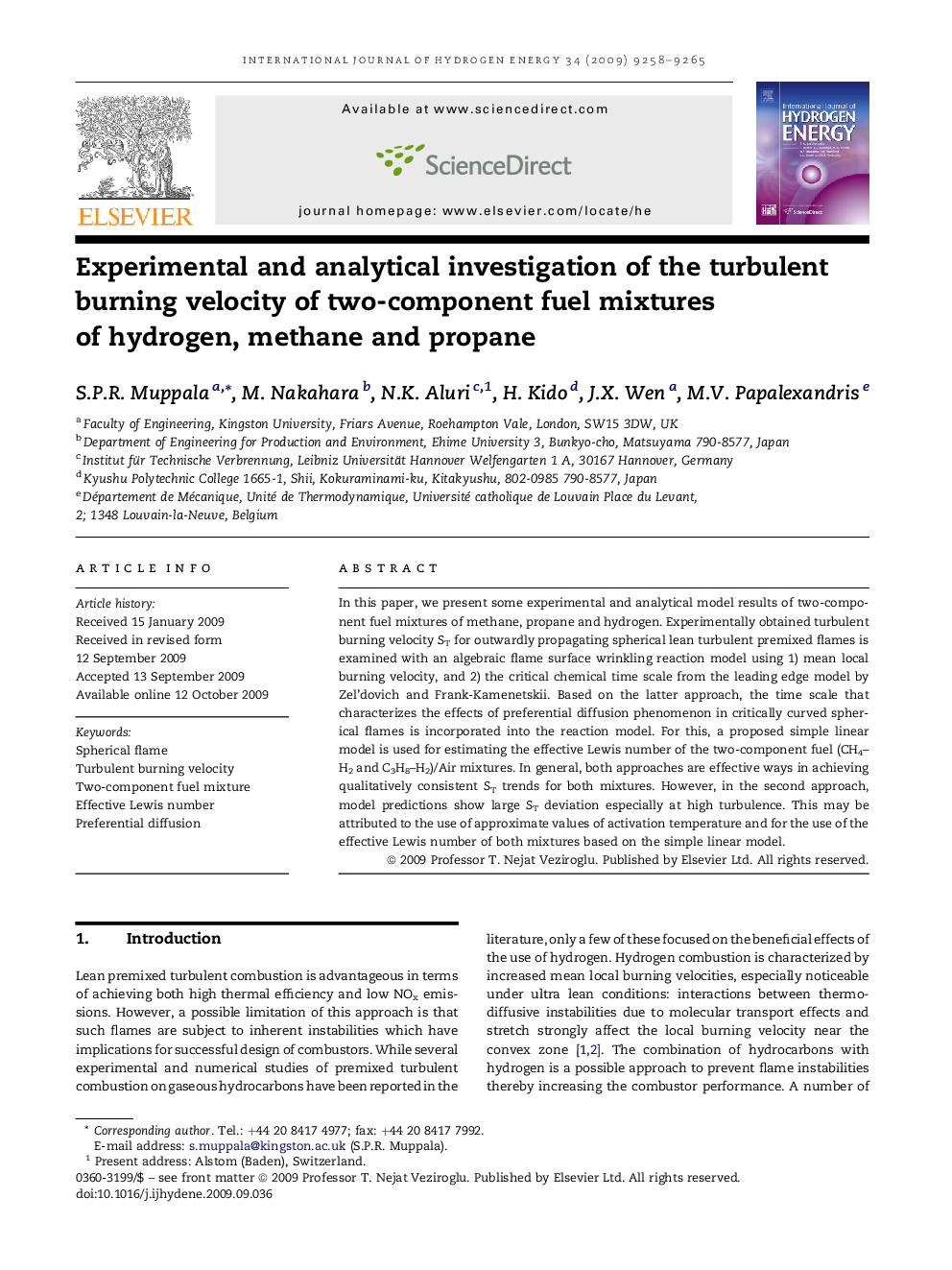| Article ID | Journal | Published Year | Pages | File Type |
|---|---|---|---|---|
| 1273582 | International Journal of Hydrogen Energy | 2009 | 8 Pages |
In this paper, we present some experimental and analytical model results of two-component fuel mixtures of methane, propane and hydrogen. Experimentally obtained turbulent burning velocity ST for outwardly propagating spherical lean turbulent premixed flames is examined with an algebraic flame surface wrinkling reaction model using 1) mean local burning velocity, and 2) the critical chemical time scale from the leading edge model by Zel'dovich and Frank-Kamenetskii. Based on the latter approach, the time scale that characterizes the effects of preferential diffusion phenomenon in critically curved spherical flames is incorporated into the reaction model. For this, a proposed simple linear model is used for estimating the effective Lewis number of the two-component fuel (CH4–H2 and C3H8–H2)/Air mixtures. In general, both approaches are effective ways in achieving qualitatively consistent ST trends for both mixtures. However, in the second approach, model predictions show large ST deviation especially at high turbulence. This may be attributed to the use of approximate values of activation temperature and for the use of the effective Lewis number of both mixtures based on the simple linear model.
